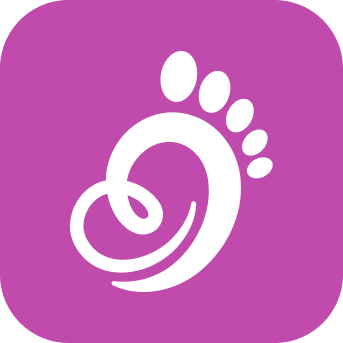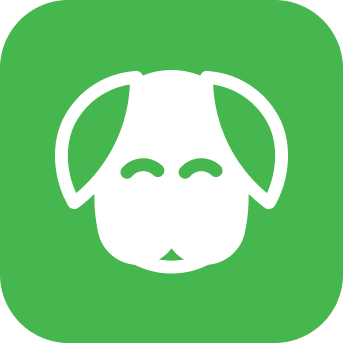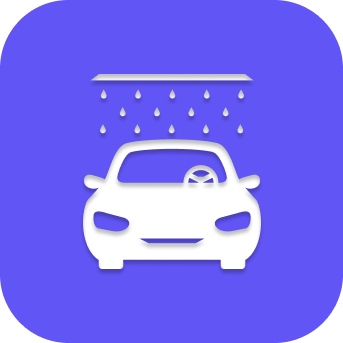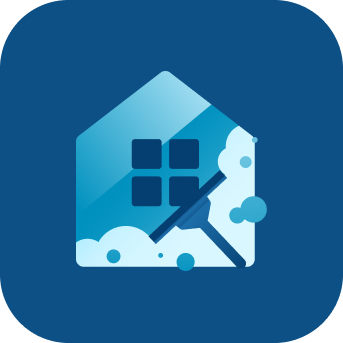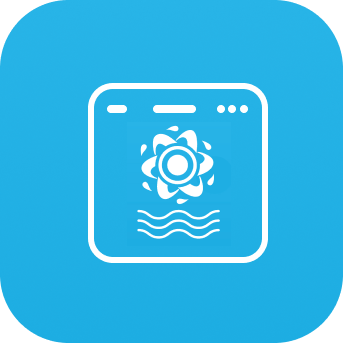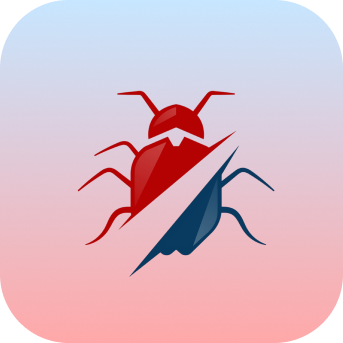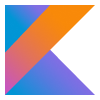Build your own Uber for laundry with this ultimate development guide featuring cost estimates, essential features, tech recommendations, and revenue models.
In today's fast-paced world, convenience is king. People are increasingly turning to on-demand services that save time and simplify their daily routines. Among these, on-demand laundry apps have emerged as a game-changer, transforming how people manage their laundry needs. If you're considering entering this lucrative market, this comprehensive guide will walk you through everything you need to know about building a laundry app like Uber.
What is an On-Demand Laundry App?
An on-demand laundry app is a digital platform that connects users with laundry and dry cleaning services, offering the convenience of home pickup and delivery. Similar to how Uber revolutionized transportation, these apps eliminate the need for customers to visit physical laundromats, allowing them to schedule services from the comfort of their homes.
Market Opportunity: Why Invest in Laundry App Development?
The numbers speak for themselves. The online laundry service market was valued at approximately $43.36 billion in 2024 and is projected to reach a staggering $405.36 billion by 2032, growing at a remarkable CAGR of 35.56%. This exponential growth is driven by several factors:
Growing On-Demand Economy
Urban populations are expanding, and busy lifestyles mean people prioritize time-saving solutions. The convenience of scheduling laundry pickup with a few taps makes on-demand laundry services increasingly attractive.
High Customer Retention
Unlike one-time services, laundry is a recurring need. Once customers find a reliable app, they tend to stick with it, ensuring steady revenue through repeat orders and building long-term customer loyalty.
Competitive Advantage
Most traditional laundry services still operate without a digital presence. By launching a laundry app, you gain a significant edge over competitors while reaching tech-savvy customers who prefer digital solutions.
Lower Operational Costs
Following Uber's model, you can create a lean business by partnering with local laundry service providers rather than investing in physical infrastructure. A commission-based model allows you to earn revenue without the overhead costs of maintaining facilities.
How Does a Laundry App Work?
Understanding the workflow is crucial before diving into development. Here's the typical process:
Step 1: User Books a Service
Customers open the app, select their preferred laundry service (wash and fold, dry cleaning, ironing), schedule a pickup time, and place their order.
Step 2: Order Assignment
Once confirmed, the system assigns a nearby delivery agent to pick up the clothes at the scheduled time and location.
Step 3: Laundry Processing
The delivery agent brings the laundry to the service provider, where clothes are washed, dried, and ironed according to customer preferences and garment care instructions.
Step 4: Delivery and Payment
After processing, the delivery agent returns the freshly laundered clothes to the customer's doorstep. Payment can be made through the app or via cash on delivery.
Essential Features for Your Laundry App
A successful laundry app requires three distinct interfaces: Customer App, Service Provider App, and Admin Panel. Let's explore the must-have features for each.
Customer App Features
1. Easy Registration and Login Allow users to sign up quickly using their phone number, email, or social media accounts. Streamlined onboarding reduces friction and improves user adoption.
2. Service Selection and Customization Customers should be able to choose from various services like regular wash, dry cleaning, ironing, or specialty treatments. Include options for fabric type, detergent preferences, and special instructions.
3. Flexible Order Scheduling Enable users to schedule pickup and delivery times according to their convenience, with options for same-day, next-day, or scheduled services.
4. Real-Time Order Tracking GPS-enabled tracking allows customers to monitor their order status from pickup to delivery, increasing transparency and trust.
5. Multiple Payment Options Integrate various payment gateways including credit/debit cards, digital wallets, UPI, and cash on delivery to accommodate different user preferences.
6. Order History A comprehensive history of past orders helps users track their spending and quickly reorder their preferred services.
7. Push Notifications Keep customers informed about order confirmations, pickup times, processing status, delivery updates, and promotional offers through timely notifications.
8. Ratings and Reviews Allow users to rate their experience and provide feedback, helping maintain service quality and build trust with new customers.
9. Promo Codes and Loyalty Rewards Implement a rewards system with referral bonuses, discount coupons, and loyalty points to encourage repeat business.
Service Provider App Features
1. Provider Dashboard A dedicated dashboard where laundry service providers can register, manage their profile, and view their service offerings.
2. Order Management Service providers can accept or reject orders based on their capacity, view order details, and manage their workflow efficiently.
3. Service Management Ability to list available services, set pricing, specify turnaround times, and highlight specialty services like eco-friendly washing or garment care.
4. Delivery Coordination Track assigned delivery agents, monitor pickup and delivery status, and communicate directly with drivers when needed.
5. Earnings Dashboard Real-time visibility into earnings, completed orders, pending payments, and commission breakdowns.
6. Customer Feedback Access to customer ratings and reviews helps providers improve their service quality and build their reputation.
7. Inventory Management Track cleaning supplies, manage resource allocation, and receive alerts when supplies are running low.
Admin Panel Features
1. Comprehensive Dashboard A centralized hub displaying real-time data on users, service providers, delivery agents, orders, and revenue metrics.
2. User Management Monitor and manage all user accounts, handle customer complaints, and take action against reported service providers if necessary.
3. Service Provider Management Approve new provider registrations, verify credentials, manage commissions, and monitor service quality.
4. Order Tracking and Management Oversee all active orders, address issues, and ensure smooth operations from pickup to delivery.
5. Analytics and Reporting Generate detailed reports on app performance, revenue trends, popular services, customer behavior, and market insights to make data-driven decisions.
6. Payment Management Handle all financial transactions, process refunds, manage commission payouts, and maintain transparent financial records.
7. Content Management Update app content, promotional banners, service descriptions, and pricing information without requiring technical intervention.
8. Push Notification Management Send targeted notifications to users and service providers about offers, updates, and important announcements.
9. GPS Tracking Monitor delivery agent locations in real-time to optimize routes, reduce delivery times, and improve customer satisfaction.
Step-by-Step Development Process
Building a successful laundry app requires careful planning and execution. Here's a structured approach:
Phase 1: Discovery and Market Research
Start by understanding your target audience busy professionals, students, families and their specific pain points. Analyze competitors to identify gaps in the market and opportunities for differentiation. This research phase helps you create user personas and prioritize features for your Minimum Viable Product (MVP).
Phase 2: Product Requirements and Planning
Define clear user journeys for all stakeholders: customers, service providers, and delivery agents. Choose your technology stack based on factors like scalability, budget, and time-to-market. Decide which features are essential for launch and which can be added later. Assemble your development team and create a detailed roadmap with milestones and KPIs.
Phase 3: UX/UI Design
Sketch user flows for key interactions like booking, tracking, and payment. Create wireframes that evolve into high-fidelity UI screens with intuitive navigation and engaging visual elements. Build an interactive prototype and conduct usability testing with real users to identify and fix issues early. Establish a design system for consistency across all screens.
Phase 4: Development and Testing
Developers build the core modules booking system, provider management, and admin panel while backend engineers set up secure databases, APIs, and cloud infrastructure. Integrate essential third-party services like payment gateways, mapping APIs, and notification systems. Simultaneously, QA engineers perform rigorous testing including unit testing, integration testing, and performance testing to ensure the app is stable and bug-free.
Phase 5: Deployment
Publish the customer app on Apple App Store and Google Play Store with optimized listings, compelling descriptions, and attractive screenshots. Deploy the admin dashboard and service provider interfaces. Consider a soft launch in a limited region to gather feedback and make necessary adjustments before scaling to a wider audience.
Phase 6: Post-Launch Support and Maintenance
Continuous improvement is key to long-term success. Regularly release updates with new features, bug fixes, and performance enhancements. Monitor user feedback, track app analytics, scale infrastructure as demand grows, and maintain robust security measures.
Revenue Models: How to Make Money
A well-designed laundry app can generate revenue through multiple streams:
1. Commission on Orders
Charge a percentage (typically 15-30%) on each completed order if you're connecting users with third-party laundry services.
2. Delivery Fees
Implement flat-rate or distance-based delivery charges for pickup and drop-off services.
3. Subscription Plans
Offer monthly or yearly packages with benefits like unlimited pickups, priority service, or discounted rates for regular users.
4. Surge Pricing
Apply dynamic pricing during peak hours, weekends, or festive seasons when demand exceeds supply.
5. Premium Services
Charge extra for value-added services like same-day delivery, eco-friendly detergents, garment repairs, or specialty cleaning.
6. In-App Advertising
Generate additional income by featuring relevant brands (detergents, fabric softeners, garment care products) within your app.
7. B2B Partnerships
Secure bulk contracts with hotels, gyms, spas, hostels, and corporate offices for recurring, high-volume laundry services.
Laundry App Development Cost
The cost depends on complexity, design, and developer location. A basic MVP (Minimum Viable Product) can cost $25,000–$75,000, covering design, app development, backend API, and testing.
A white-label clone app costs around $10,000–$25,000, ideal for startups wanting a quick launch. Custom builds, however, offer better scalability, performance, and long-term brand value.
Technology Stack Recommendations
Choosing the right technology stack ensures your app is scalable, secure, and performs optimally.
Frontend Development
- iOS: Swift, Objective-C
- Android: Kotlin, Java
- Cross-Platform: React Native, Flutter
Backend Development
- Languages: Node.js, Laravel, PHP
- Databases: MongoDB, PostgreSQL, MySQL
- Cloud Services: AWS, Google Cloud, Microsoft Azure
Essential Integrations
- Payment Gateways: Stripe, PayPal, Razorpay
- Mapping and GPS: Google Maps API, Mapbox
- Push Notifications: Firebase Cloud Messaging, OneSignal
- SMS Services: Twilio, Amazon SNS
- Analytics: Google Analytics, Mixpanel
Popular Laundry Apps: Learning from Success Stories
Studying successful laundry apps provides valuable insights:
Cleanly - Focuses on 24-hour turnaround with an intuitive booking interface and reliable service.
Rinse - Offers premium quality with services across seven states, loyalty rewards, and flexible delivery options.
FlyCleaners - Provides extensive scheduling flexibility with pickup windows from 6 AM to midnight and overnight cleaning options.
Tide Cleaners - Leverages brand trust and includes garment repair services, though availability varies by location.
Laundry Care - Offers multiple turnaround options (same-day, one-day, two-day) with free pickup and delivery.
Key Takeaways for Success
Building a successful laundry app like Uber requires:
- User-Centric Design: Prioritize intuitive navigation and seamless user experience across all touchpoints.
- Reliable Service Network: Partner with quality laundry service providers and maintain strict quality standards.
- Technology Excellence: Invest in robust backend infrastructure that can scale as your business grows.
- Marketing Strategy: Implement referral programs, strategic partnerships, and targeted advertising to acquire and retain customers.
- Continuous Improvement: Regularly update your app based on user feedback and emerging market trends.
- Customer Support: Provide responsive customer service to quickly resolve issues and build trust.
Conclusion
The on-demand laundry app market presents a tremendous opportunity for entrepreneurs and established businesses alike. With the right features, a solid development approach, and a clear monetization strategy, you can build a profitable laundry app that solves real problems for busy customers.
While the initial investment may seem substantial, the potential for recurring revenue, customer loyalty, and business scalability makes it a worthwhile venture. Whether you choose to develop from scratch, use a ready-made solution, or leverage app builders, the key is to start with a clear vision, understand your target market, and deliver exceptional value.
The time to enter the on-demand laundry market is now. With proper planning, the right development partner, and a commitment to quality, your laundry app can become the next big success story in the on-demand economy.
Ready to build your laundry app? Start by conducting thorough market research, defining your unique value proposition, and choosing the development approach that best fits your budget and timeline. The future of laundry services is digital and the opportunity is yours to seize.




